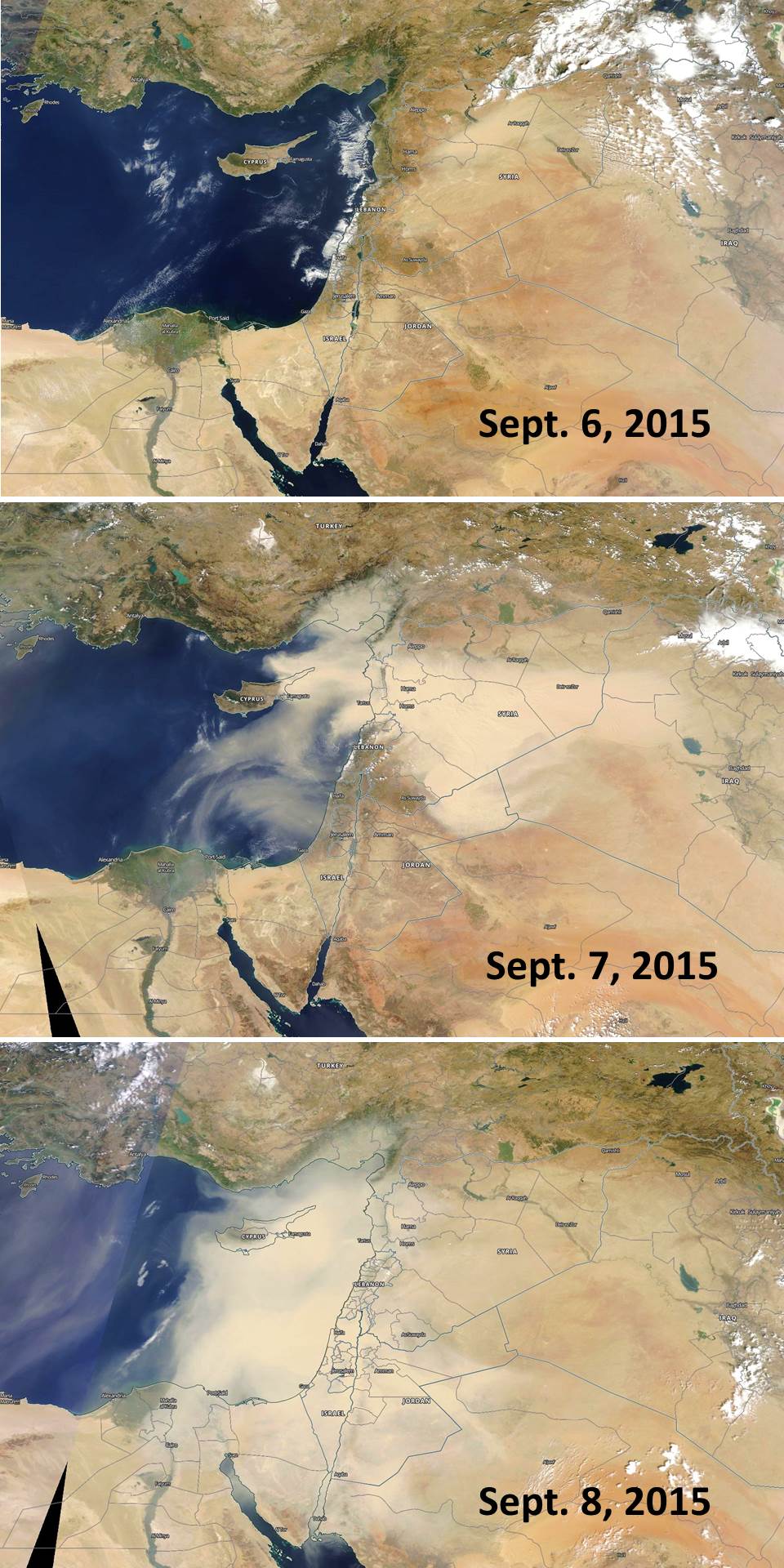The dust storm currently impacting the Middle East started over northern Syria two days ago, and has spread south and westward. I don’t recall one this extensive in this area during the modern satellite era.
The following color imagery from the NASA MODIS instrument reveals the daily progression of the storm, and just how large an area the storm has covered, from southern Turkey to northern Egypt (click to enlarge).

 Home/Blog
Home/Blog




